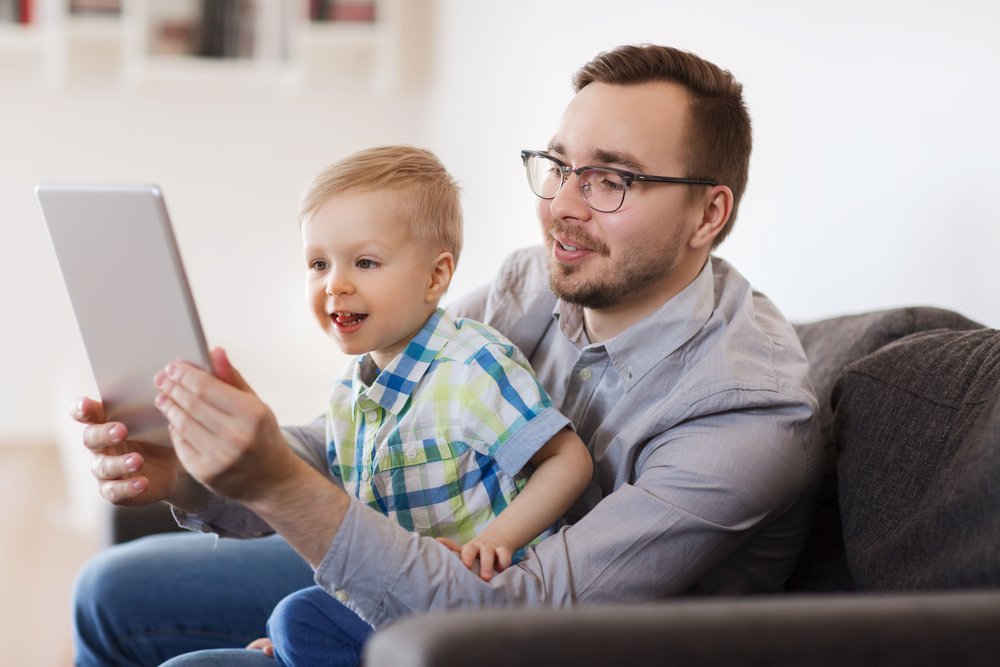Key Points:
- Children under the age of two can learn from and form relationships with loved ones through video chat.
- Researchers found that one-on-one, live interactions through video chat can help children learn social and cognitive information, such as recognizing and preferring people they’ve talked to through video chat and learning new words and patterns.
- Children can tell the difference between live and pre-recorded video chats, and only benefit from live interactions with real people.
- Live video chats can be used in developmentally appropriate ways to help children build bonds with family and friends who live far away.
Across the globe, people use tools like FaceTime and Skype to connect with family and friends through video chat. But what about our children? Do they understand and grow from these on-screen interactions with loved ones?
Video chat and early childhood research
A team of researchers from Lafayette College, led by Professor Lauren J. Myers, Ph.D., studied 1- to 2-year-olds to find out what they got out of their FaceTime interactions, looking to discover if they form relationships and learn from people via video chat. In the study, 60 children under 2 years old were divided into two groups. Each group experienced one week of either real-time video chat interactions or pre-recorded videos of novel words, actions, and patterns.
On one hand, researchers found that children paid attention and responded to both people in the video but only responded in sync with the partner in the interactive video chat (such as imitating a clap after the person in the video did). Likewise, after one week of video chatting, children in the live condition learned social and cognitive information. For example, they preferred and recognized someone they had talked with through video chat and they learned new words and patterns.
On the other hand, learning did not occur when the partner was pre-recorded and couldn’t see or hear the child, and respond accordingly. They found evidence that babies can tell the difference between live interactions and pre-recorded “false” interactions that have pauses after questions and calls to response –similar to many popular children’s programs on TV. The conclusion was that video chats can be used in developmentally appropriate ways for kids.
According to this study, at around the age of 17 months, children begin to learn from live video interactions with real people. “They start to understand who that person is on the screen, and they’re able to get something meaningful out of the live video interaction with them,” says Myers.
So you can rest easy knowing that your toddler can and will learn from and create bonds with family members, like grandma and grandpa –even if they don’t physically see them a lot. Live video chat tools help build a bridge between them!









2 Responses
Thanks for the interesting article! Has there been any research on how live video interactions such as FaceTime compare to in-person interactions?
Hi Erin! There has been some research about it. Face to face interactions are better than digital interactions, but still digital interactions have a good outcome when it’s all we have.